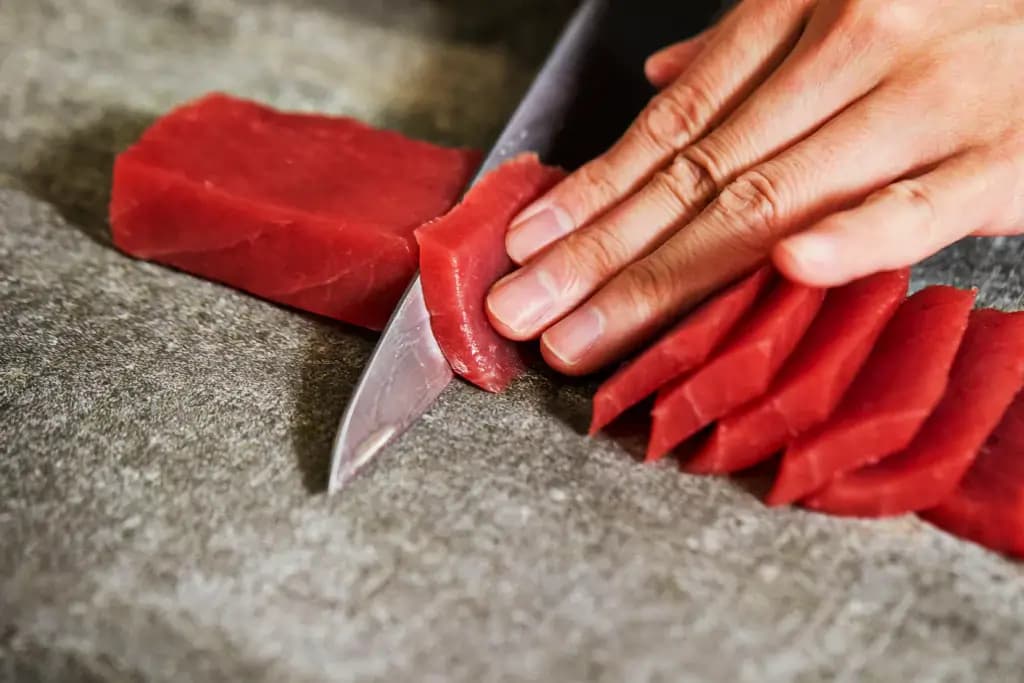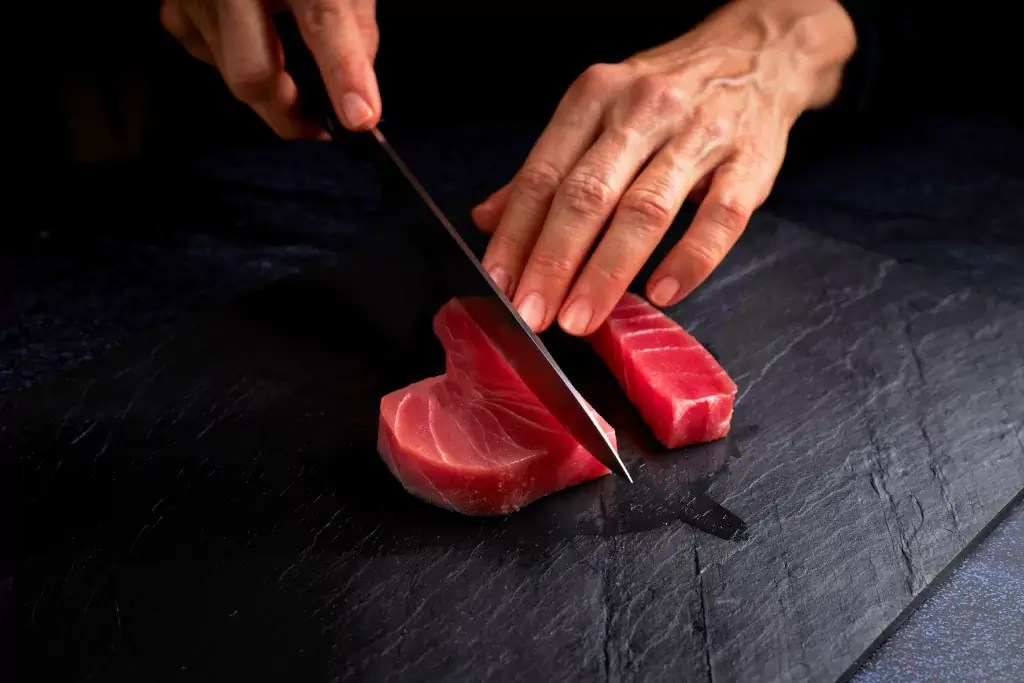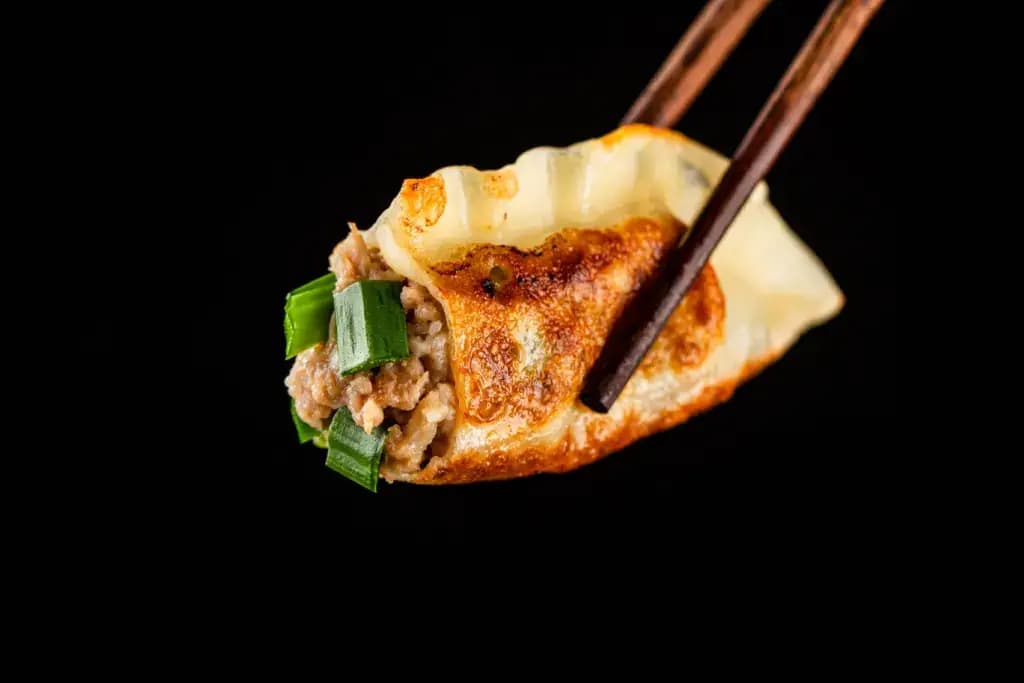

2025 SEPTEMBER 26
.Sophia Wasylinko
Sashimi: How To Prepare This Essential Seafood Dish!
Sashimi is an important part of Japanese food culture. From the standard fish options to the more unusual beef and chicken, it’s a must-try for foodies and folks stepping outside their comfort zone.
But don’t worry if you can’t travel to Japan – you can easily, and safely, make this snack at home! In this blog, we’ll review its variations, how to prepare them, and various ways to enjoy them. Here’s everything you need to know about this essential seafood (and meat) dish.
What is sashimi?
Literally meaning “pierced meat” or “stuck body,” this snack has a fascinating history. While its name originated in the Muromachi period (1336-1573), likely referring to how fish were caught, the dish has been around since before the Kamakura period (1185-1333). In its present form, this dish was only eaten as a delicacy by the nobility in the Edo period (1603-1868), but everyone now enjoys it.
Sashimi is served at various Japanese restaurants, izakayas, and eateries, including sushi places. It’s usually made with fish such as maguro (tuna), tai (seabream), and sake (also called shake or salmon). However, chicken, beef, and even horse meat are used in some regions. There are also vegetarian options such as takenoko (bamboo shoots), yuba (tofu skin), and konnyaku (konjac) strips.

Is sashimi safe to eat?
If prepared correctly, this snack is both delicious and nutritious. It’s an excellent source of protein, whose health benefits include tissue repair and weight management. It has a lower calorie count and contains vitamins and minerals like Vitamin B and magnesium. For example, the omega-3 fatty acids in salmon can improve heart health and decrease inflammation.
However, sashimi can also cause foodborne illness due to expired meat or improper handling. Some fish can carry bacteria or parasites, causing foodborne illnesses like diphyllobothriasis or toxic metals like mercury. Raw chicken comes with a risk of salmonella, which is why it’s less common. If you plan to make this dish, only use fresh protein, and remember to clean your knife and cutting board thoroughly.
What knife should I use to prepare it?
Regarding sashimi, the yanagiba (willow leaf knife) is a chef’s best friend. Its long, thin blade is perfect for even slicing, especially for fish. You’ll be using it for several cutting techniques, including: hirazukuri (flat slice), the standard cut; usuzukuri (thin slice), which are almost transparent; and kakuzukuri (square slice) for cubes.

Before you begin, debone and skin the fish or meat and rinse it in ice water. You’ll also need a bowl of ice water to rinse the blade between slices. Dry the fish/meat and make the cuts using quick, precise strokes on a good cutting board. Serve the finished product as soon as possible; refrigerate when it’s not being eaten, and consume within the next few days.
Are you looking for great knives to make the best food with? Check out ZAKU! ZAKU has authentic knives handmade in Japan for all of your culinary needs!

What are some popular ways to enjoy sashimi?
Dipping
Let’s start with the classics. Here, the protein is served on top of daikon (radish) or shiso (perilla) leaves, with soy sauce or ponzu (citrus-based sauce) for dipping. If you want to feel like you’re eating at a restaurant, garnish with wasabi and fresh or pickled ginger.

Tataki
Translating to “hit into pieces,” there are two ways of preparing tataki. Less commonly, the protein is pounded into a paste, but the garnishes usually get that treatment. The meat (typically chicken, beef, or tuna) is instead lightly seared and thinly sliced.
Donburi
Outside of sushi, you’ll often find raw fish topping this rice “bowl” dish. Donburi is an easy way to upgrade sashimi from a snack to a meal. It’s also a great way to use leftovers, especially if you have tons of rice and veggies that need to go!
Why should I try sashimi?
This dish isn’t limited to a specific method or even one type of ingredient. There are options for pescetarians, vegetarians, and even vegans. You can slice fish from your local supermarket to top a bowl of white rice or lightly sear beef to dip in ponzu sauce with ginger. Plus, did we mention the health benefits of eating raw fish?

While sashimi isn’t the strangest food, it’s one that many people find daunting. However, it’s also easy to recreate at home, especially if you’re on a budget or can’t take time off to travel to Japan. By following the recipe and health guidelines to a T, you’ll know exactly how it is prepared and feel more comfortable eating it.
Sashimi is a unique Japanese delicacy that more people should try. From seabream and tuna to beef and chicken, some variations will appeal to even the most squeamish. And if prepared using fresh ingredients and clean tools, it’s both safe and healthy to eat. We recommend trying one or more online recipes to transport you to Japan from your home kitchen. What’s your favorite type of sashimi? Tell us in the comments.


















